#glocal
Link
Boom di domande per il bonus psicologico: l'Ordine dell'Umbria fa il punto Nei giorni in cui si registra un boom di domande per il nuovo bonus psicologico, l’Ordine degli Psicologi dell’Umbria fa un primo bilancio sul precede...
0 notes
Photo

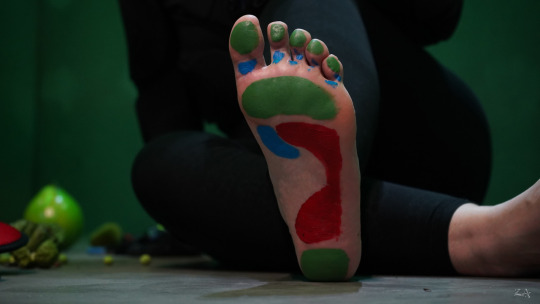
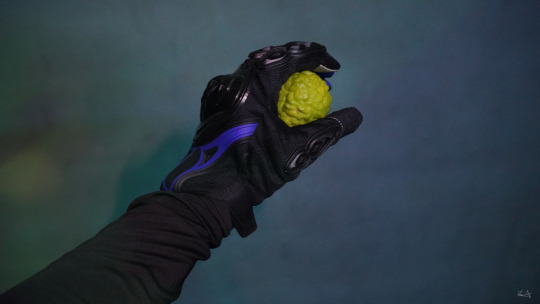



Soft Mobility: Character Development, performance by Kai (Kari) Altmann in Soft Mobility: Monsoon Season (Precious Cargo), N22, Bangkok, 2019.
See more of Soft Mobility by Kai (Kari) Altmann
#kai altmann#kari altmann#post internet performance#ceremonial art#new world art#globalism#identity#found materials#glocal#bangkok#streetmarket#megastore#natural materials
1 note
·
View note
Text
The reasons why every digital entrepreneur needs to read the newsletter "Second Website Language" about website localisation and multilingual traffic generation are many and varied.
However, some of the most important reasons include:
1. Understanding the global market: In order to tap into new markets and reach new customers, it is essential to understand the importance of website localisation. By making your website available in multiple languages, you can dramatically increase your reach and significantly boost your bottom line.
2. Increasing traffic: Multilingual traffic can be a major source of growth for your business. By catering to international audiences, you can dramatically increase the number of visitors to your website. This can lead to increased sales and a stronger overall web presence.
3. Boosting search engine rankings: Localised content can help you achieve higher search engine rankings. This is especially true for keywords that are specific to certain regions or languages. By appearing higher in search results, you can attract more traffic and potential customers.
4. Enhancing the user experience: A localised website provides a better user experience for international visitors. This can lead to increased satisfaction and loyalty from your customer base.
5. Growing your business: A localised website is an essential tool for any business that wants to grow its reach and succeed in the global marketplace. By making your website available in multiple languages, you can open up new opportunities and reach new customers around the world. 🗺
#localisation#glocal#womeninbusiness#localseo#investments#venturecapitalist#angelinvestors#startupgrind#techstartups#siliconvalley#growth hacking#Multilingual SEO#multilingual seo services#Multilingual Traffic
1 note
·
View note
Text
Inviting you to join a global network of scholars and organizations
The GLOCAL, The Global Council for Anthropological Linguistics, is a council steering annual conferences, publications, and media, scholarship, consultations, and collaborations on Linguistic Anthropology / Anthropological Linguistics / Sociolinguistics, with a global focus.
Scholars globally gather to engage in work on fields in Linguistic and Cultural Anthropology, though this does not limit interest to Linguistic Anthropologists, Linguistics, or Anthropologists. Networking a global set of higher institutions, and organizations, the GLOCAL collaborates with multiple bodies to increase the scope and quality of work in these fields.
I have worked at the SOAS GLOCAL for two years, as a Media and Web Design Coordinator. On behalf of the SOAS GLOCAL, and as its Media and Web Design Coordinator, I invite you to join a global network of scholars and organizations, but following the following link, and for which, you will need to quickly make an account (free):
https://soas.academia.edu/GLOCALSOAS
The SOAS GLOCAL is a globally very significant one in that it works with countries such as Bangladesh to give these countries equality globally, while attempting to garner funding to build the cultural and language sectors in these countries. Just by following, you will be helping the cultural industry, academic institutions, and larger domains throughout the country, immensely.

0 notes
Photo

Creative Direction & PR <Client> @butcherjo_official @kobe_heights <Content> 日本は神戸を代表する気鋭の肉職人 @butcherjo_official が手掛ける実店舗 @kobe_heights にて、納涼パーティーが開催されます。 詳細はクライアントアカウントより、ご覧くださいませ。 神戸市兵庫区梅元町16-40 #meatpointhere 夏祭り感覚なカジュアルさと上質な料理が掛け合わさる、気持ちの良いイベントとなること間違い無いし! イベント最後は参加者みんなで、手持ち花火をします。 最高なサマーメモリアルを作りましょう。 #popup #summerparty #bbq #meat #steak #Kobe #fashion #food #foodevent #beef #beefgang #butcher #schinatown #creative #community #glocal #outdoor #sparkle #hanabi #2022 #夏祭り #手持ち花火 #納涼会 #梅元町 #神戸 https://www.instagram.com/p/ChDtYjGvkrN/?igshid=NGJjMDIxMWI=
#meatpointhere#popup#summerparty#bbq#meat#steak#kobe#fashion#food#foodevent#beef#beefgang#butcher#schinatown#creative#community#glocal#outdoor#sparkle#hanabi#2022#夏祭り#手持ち花火#納涼会#梅元町#神戸
0 notes
Text
Yall ready to receive some actionable information?
I need to review and reorganize again but it's acceptable enough for now
#hate how mobile will add stuff to the wrong playlist#usa politics#politics#youtube#global politics#praxis#how to help#breadtube#lefttube#noncompete#cgp grey#Andrewism#vox#second thought#renagade cut#kathrin#glocal weirdo#caelan conrad#tacticool girlfriend#the people's bayonet#bemundolack#crashcourse#voting#end goals#sustainability#art#fighting doomerism#hope#america fom scratch#my posts
2 notes
·
View notes
Text
youtube
CW for depressing climate stuff at the start, I guess. The book makes up for it, though.
Jason Hickel's "Less Is More: How Degrowth Will Save The World" is excellent. Read it.
Link to the eco-economics book: https://www.researchgate.net/publicat...
---------- Music in order of appearance ---------
???????????*
Without - Unfound
???????????*
Boss music from Legend of Zelda: Ocarina of time
???????????*
My own jingles
*Question marks because the person behind the playlist I got the music from ( • Vaporwave Chill Non-CopyRight Music! ... ) didn't have the courtesy to credit the artists
#degrowth
#Eyeball Zone#Glocal Weirdo#degrowth#doomscrolling#Covid#eco anxiety#Jason Hickel#Less is More#GDP#Resources#Decoupling#climate crisis#recession#planned obsolescence#right to repair#advertising#fallacies#GPI#equality#rent#mass movement#You're not the only one#ecological crisis
1 note
·
View note
Text
youtube
Welcome to our comprehensive review of St. Andrews College, where we provide an honest and in-depth look at this renowned educational institution. Whether you're a prospective student or simply curious about what St. Andrews College has to offer, this video is for you! In this video, we cover essential aspects such as admission procedures, fee structure, placement opportunities, campus life, faculty, and more. Our goal is to provide you with the information you need to make an informed decision about your higher education journey. Here are some of the key points we'll be discussing: 💰 Fee Structure and Scholarships 🌐 Campus Life and Facilities 👨🏫 Faculty Expertise 📈 Placement and Career Opportunities Watch the video to get an insider's perspective on St. Andrews College, including pros and cons, to help you decide if it's the right fit for you. If you found this review helpful, don't forget to hit the like button, share with others who might benefit, and subscribe to our channel for more educational content. ABOUT COLLEGETOUR: Collegetour is an online portal for students which aims to bring education institutional data, like, colleges, courses, fee details, exam updates, cut offs, admission process, scholarship programs, etc. on one podium. Collegetour is a one stop shop for education industry related data centres for the students and provides information and updates pertaining to the educational institutions across India and globe. As an online forum we deliver the latest updates and current events of the education industry. Collegetour distinguishes itself as an online portal in the market by facilitating most rationalized information of the educational sector from the most reliable sources of the industry. Our Mission: In the highly competitive educational environment as an organisation we aspire to enable the quality and current educational information to students, to help them in one of their toughest decision making processes and make it more smoother and easier for them in a cost effective way. Our Vision: Collegetour objectifies its purpose to become the most approachable and sought after podium which provides what exactly a student needs to pave their pathway in the education industry 🔔 Subscribe for More: Enjoyed this? Don't forget to subscribe and turn on notifications so you never miss an update from us! Click here to subscribe: / @collegetourr 🌐 🌐 Connect With Us: Collegetour is more than just a YouTube channel. Join our community on: - Facebook: / collegetour.in - Instagram: / collegetour_ - Website:https://collegetour.in/#StAndrewsCollege#CollegeReview#HigherEducation#AdmissionProcess#FeeStructure#PlacementOpportunities#CampusLife#FacultyExpertise#StudentLife#EducationChoices#CollegeExperience
#iec university#subharti university#degree verification#glocal university#neftu university#mewar university#sunrise university#shobhit university#arni university#opjs university#lor#eiilm university#cmj university#shridhar university#kalinga university#wcu#neftu#fake degree#nims university#ybn university#university#top 10 best universities in india#what is transcript#what is original degree#back date degree#how to verify back date degree#Youtube
0 notes
Text
When Kerry Met Kris - Negotiating Caribbean Development with US Secretary of State
We heard the welcome news that the USA will return as a member State of UNESCO.
This has been as a result of intense lobbying by civil society and behind the scenes cajoling.
The US rejoining signal new possibilities for bilateral and multilateral arrangements with Caribbean countries.
The work started halted and stayed in abeyance for eight years.
That’s how sluggish the diplomatic and…
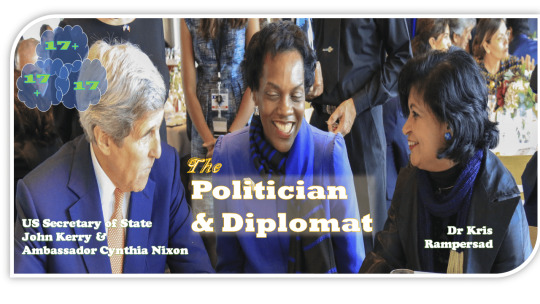
View On WordPress
#Audrey Azoulay#Caribbean#Caribbean Authors#Caribbean culture education#diplomacy#Dr Kris Rampersad#Global Diversity Inclusion Strategy#GloCal Knowledge Pot#International Affairs#John Kerry#Knowledge for Sustainable Development#UNESCO
0 notes
Text

Embark on a journey of creativity with 'Animating Imagination: B.Voc in Animation' at Glocal University. This dynamic program integrates cutting-edge courses in animation and multimedia, providing students with a comprehensive skill set. From foundational principles to advanced techniques, the curriculum covers a spectrum of multimedia animation courses, nurturing talents in visual storytelling, 3D animation, and digital artistry. Our commitment to excellence ensures graduates are well-versed in the intricacies of animation and multimedia, making them industry-ready artists capable of bringing imaginative worlds to life. Join us at Glocal University and transform your passion for animation into a captivating career.
0 notes
Video
Glocal Square Mall is an upcoming shopping center, developed by the Goel Ganga Group and located at the World Trade Center of Nagpur.
https://www.a2zproperty.in/Maharashtra/Nagpur/glocal-square-ground-and/index.html
1 note
·
View note
Link
Boom di domande per il bonus psicologico: l'Ordine dell'Umbria fa il punto Nei giorni in cui si registra un boom di domande per il nuovo bonus psicologico, l’Ordine degli Psicologi dell’Umbria fa un primo bilancio sul precede...
0 notes
Text







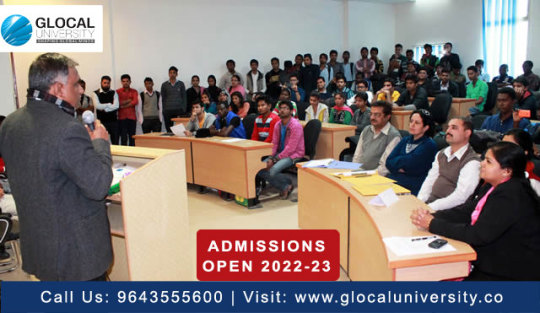


Welcome to the Glocal University Best University in India that is UGC recognized. Glocal University offers most renowned and demanding course for your bright future. Visit our website here.
#Glocal University#best university in Noida#mba from best university in noida#bba admission open in noida
1 note
·
View note
Text
From Globalization to Glocalization

The term "glocalization" is a portmanteau formed by combining the terms "globalization" and "localization." This is a phrase that is used to describe a good or service that is developed and disseminated on a global scale, but that also has modifications made to it so that it can be utilized by or consumed by people in their respective local markets.
0 notes
Text
Seme/uke - long response
A decolonial and subaltern take on three posts on seme/uke dynamics that aims to contextualize them while questioning ethnocentrism. I welcome alternative perspectives, corrections and criticisms.
Post #1: Seme/uke dynamics in Be Loved in House...
@absolutebl responding to @echos-of-ivy
Seme – Uke
About two or more characters in a ship/pairing:
seme 攻め: top (the pitcher) (from origin - attack) also referred to as 左 (left)、タチ (tachi)、トップ (top)
uke 受け: bottom (the catcher) (from origin – receive / accept) also referred to as 右 (right)、ネコ(neko/cat)、ボトム (bottom)
riba リバ: verse (doesn't mind being either a top or a bottom) (from origin - reversible)
seme and uke are sourced from martial arts lingo: seme (martial arts), uke (martial arts) & is related to nanshoku tradition (depictied in ukiyo-e style painting below) of androphilia rather than western norms of queerness. Such differences in culture in queerness is seldom appreciated.

Spring Pastimes. Miyagawa Isshō, c. 1750
Sometimes, androphilic men use seme/uke/riba instead of the following terms which are popular in their queer community:
tachi タチ 凸 - top
neko ネコ 凹 - bottom
riba リバ 回 – verse
Other BL producing countries also have similar terms for seme/uke/riba. And those countries also have terms for top/bottom/verse/side in their queer communities.
For example,
In Chinese BL (danmei), seme/uke/riba -> gong (攻)/shou (受)/hu gong (互攻)[1]
In Chinese tongzhi community -
top: gong (攻) or 1 or 上 or 凸
bottom: shou (受) or 0 or 下 or 凹
verse: bu fen (不分)or 0.5 or 10
side: 不10 or 纯爱[2]
四爱 (fourth love) is the Chinese term for heterosexual relationship wherein the woman tops. When fictionalized, such romances are referred to as GB (girl boy) romance as opposed to BG (boy girl) and the heroine is referred to as female gong 女攻め.
In Thai BL, seme/uke/riba -> me (เมะ)/ ke (เคะ)/ se (เซะ) & their queer community have these terms.
Evolution
When the work does not involve sexual acts, seme/uke/riba is assigned based on speculation (‘what if’) in line with audiences’ preference. There are a bunch of stuff that are employed to determine the dynamics but owing to variation in taste, audience don’t always agree with each other. Since seme/uke/riba archetypes rose to that status with the yaoi (doujin) boom with development of comiket, etc. tanbi, June, original shonen ai and other such types of BL don’t follow these archetypes. Live action which follows, to an extent, the latter tradition, such as Boys Love (2006), also don’t have uke/seme/riba archetypes, instead follows the archetypes that was popularized by tanbi literary movement. Tanbi literary movement was queer in more ways than one. It preceded/birthed BL (Mori Mari) and influenced it.
As no culture is passive recipient [pun intended], different glocalizations of seme/uke/riba dynamics exhibit different features, both within and outside Asia (eg. original English-language BL publication).
IRL
While being top/bottom/verse/side pertains to sexual preference/choices and acts or lack thereof, it is not devoid of other implications. Here are some interplay between these preferences/choices and the implications to consider:
Are these preference/choices innate or socially formed? Or both? Or neither?
What does it mean to be top/bottom/verse/side – within and outside the queer community?
Performance of masculinity, femininity, neither. Which masculinity/femininity? Is that masculinity/femininity performance – marginalized, soft, protest, hegemonic or amalgamated?
How local and global queer cultures influence it?
Is it some kind of conformation/attempt to fit in? If yes, what kind and why?
How are those choices impacted by history (including that of colonialism), legal/political implication (e.g.: pink certificate in Türkiye), local forms of patriarchy & heterosexism, class, nationality, race, skin color, caste, age, employment (including sex work) or lack thereof, physical location & avenues of exploration, abilities and disabilities, access to internet & other infrastructure, education (including sex education), health conditions and access to medical care, etc.
How do they form expectations regarding oneself and others?
While it can be argued that there shouldn’t be any other implication associated with such preference/choices, one can not simply wish them away as it is more often than not linked to certain social realities.
BL as well as gei comi are genres of fiction, telling tales of male androphilia – these are reproductions of imagination entwined with realities, reflecting desires, fantasies and biases plenty.
Conflation
I disagree that uke/seme/riba archetypes are conflated “casually” with bottom/top/verse in narratives and discussions around them. There is a difference that P’AbsoluteBL probably isn’t aware of:
Uke is the bottom in a ship. A character could be uke in a ship, seme or riba in another. For a character to be a ‘bottom’, he has to be sou uke or total/complete uke. It means no matter who he is paired with he will always be the uke.
Alternatively, a sou uke is a character that makes all other characters become seme for him and go after him.
Similarly, a character could be called ‘top’ when that character is a sou seme or total/complete seme. Unless a character is established as a sou seme or sou uke in the narrative, there is always a possibility that those characters are verse. While most BL involves set ships, it is not rare to find characters who are uke in one relationship becoming seme or riba in another. Sometimes, after a time skip, transmigration, reincarnation, etc. BL characters end up switching within a ship.
In Live Action
While there is plenty of riba ships in other BL media, live action has had very few.
These couples were riba in the novel:
Bai Luoyin and Gu Hai – Addicted – The censorship struck right after the couple had their first coitus interfemoris (based on the chronology in the novel).
Lu Feng and Cheng Yichen - A Round Trip to Love
Lan Yu and Chen Handong - Lan Yu
Dom/sub
While the P’AbsoluteBL is allowed to do whatever, I don’t think correlating dom/sub with seme/uke is a good idea in the context of BL because:
BL has a separate speculative fiction subgenre called dom-sub-verse (Dom/Subユニバース) which have its own conventions. It is one of the many subgenres that took inspiration from omegaverse and has grown parallel to it. It takes dominance and submission from the kink community and explores them as innate/biological traits.
It involves characters who are identified as Dom(ドム), Sub(サブ), Switch(スウィッチ), and Usual/Normal/Neutral(ユージュアル/ノーマル/ニュートラル). Along with the standard elements of BDSM in fiction such as safeword, sub space, sub drop and aftercare, it also involves additional elements such as kneel(ニール), glare(グレア) and collar (カラー). There are commands コマンド (命令) that Dom gives to Sub. Sometimes elements borrowed from omegaverse such as heats/ruts, suppressants and professional Dom also appear in this sub-genre.
Dom×Sub ship: Dom is the seme & Sub is the uke.
eg. Hizamazuite Ai Wo Tou 『跪いて愛を問う』 & Rhetoric 『レトリック』 by 山田ノノノ
Mijuku Na Boku Ha Shihai Wo Kou 『未熟な僕は支配を乞う 1』 by音海ちさ
Sub×Dom ship: Sub is the seme & Dom is the uke.
Jouzu Ni Dekita Ne Watasesan 『上手にできたね、渡瀬さん』 by 野萩あき
Shoshinsha Dom Ha Hameraretai 『初心者Domはハメられたい』 by やんちゃ
Gohoubi Ni Kubiwa Wo Kudasai (ご褒美に首輪をください) by Naruse Kano
Dom×Switch ship: Dom is the seme & Switch is the uke.
Sono Meirei De Ore Wo Abaite 『その命令で俺を暴いて』 by 小夏うみ
れ愛の声で暴いて by 泉門くき
いでおすわりしてみせて by 由元千子
Switch×Switch ship: One of the switches is the seme and the other the uke.
強情なSwitchの躾け方 by ことぶき
Dom×Dom ship: One of the dom is the seme and the other the uke.
コマンドミー、プリーズ by 町田とまと
サディスティックに暴かれたい by 星崎レオ (uke is a Dom, seme’s identity is not made clear)
Kyousei Switch 『強制Switch』 by 彩田あまた
Like most BL genres, it is yet to make its way into live-action BL.
There are plenty of BDSM themed BL as well as training (調教) style BL where seme/riba/uke can be switch or sub or dom.
Problematizing the Problem
Hence, the argument that conflation of seme/uke with top/bottom is “a PROBLEM” is ironic. The main reason given for that argument is that “het consumers [would] conflate (egregiously & incorrectly) top with male/masculine and bottom with female/feminine.” Here are some things that I think is relevant to think about that:
Why would ‘het people’ or any people for that matter think in terms of male-female / masculine-feminine binaries?
Do they think in those binaries only and not other binaries such as wen(文)-wu(武)?
Why think in binaries and dichotomies at all?
Don’t they not think in terms of multiplicity of genders/gender expressions such as various kinds of masculinities and femininities) based off on their local contexts?
Do queer people not make such/similar conflations? (Hint: they do.)
Is it a problem? While this seems to be the popular notion, plenty of scholars from across the globe has dismantled it.
What exactly do P’AbsoluteBL think ‘het people’ conflate riba characters with? Feminine-feminine? Masculine-masculine? Neither? Both? Something else?
There are different conceptions of masculinities within a culture which get reflected in cultural goods, including BL, from there.
Here are some really old depictions:
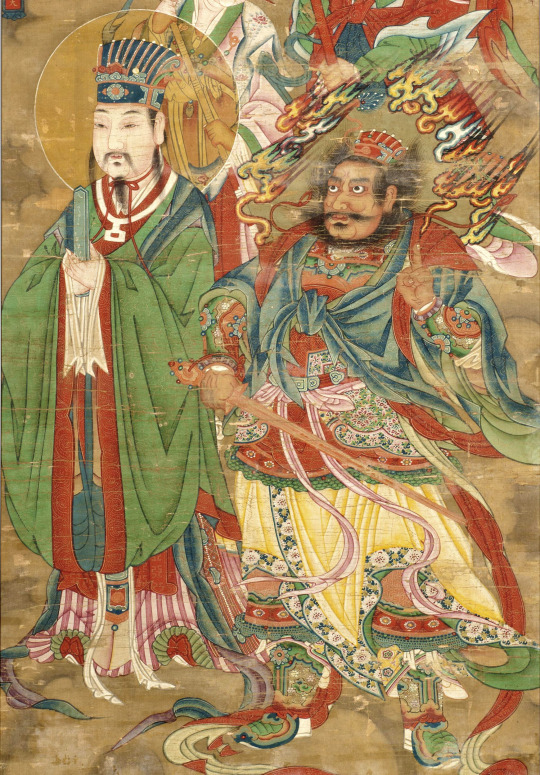
Qing dynasty Chinese Water and Land Ritual painting depicting a divine civil official and thunder god in military regalia. [Wen - wu]
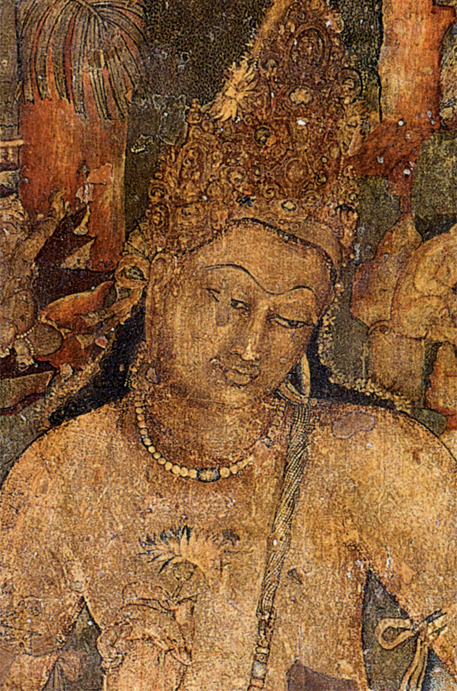

Paintings of Padmapani and Vajrapani on either side of the Buddha, from cave 1 of the Ajanta Caves.
Moreover, if the problem is hinging on a particular understanding of seme/uke: the one in which seme is not feminine or uke is not masculine enough. If latter is the issue, it can be fixed by sticking to BL media with otokomae uke or macho uke. If former is the issue, there’s more than enough works with maiden seme and josou seme. If one is yet to encounter any such works, one is not looking far enough.
Masculinities in BL

Here are three central characters from Finder series embodies different types of masculinities – a lot of it is presentation, physical attributes, age, power and social standing.
Akihito is a young and vivacious uke who happens to be short and sinewy.
Asami Ryuichi is a supadari seme: a guy who is tall, well educated, high earning, with good looks. In addition, he cooks and cleans and cares when he wants to.
Fei Long is tall, beautiful and cunning and can be regarded as a riba character.
But can any of these characters considered not masculine by regular standards? Isn’t Akihito masculine enough for his age? And if we are to compare Asami, we are sure to find him lacking but then give him time to grow. They have a dozen years between them. Moreover, can average men stand comparison with a super darling? But then in the grand setup of patriarchy, isn’t power concentrated in the hands of the older men who dominates even the super darlings, both in real world and fictional ones.
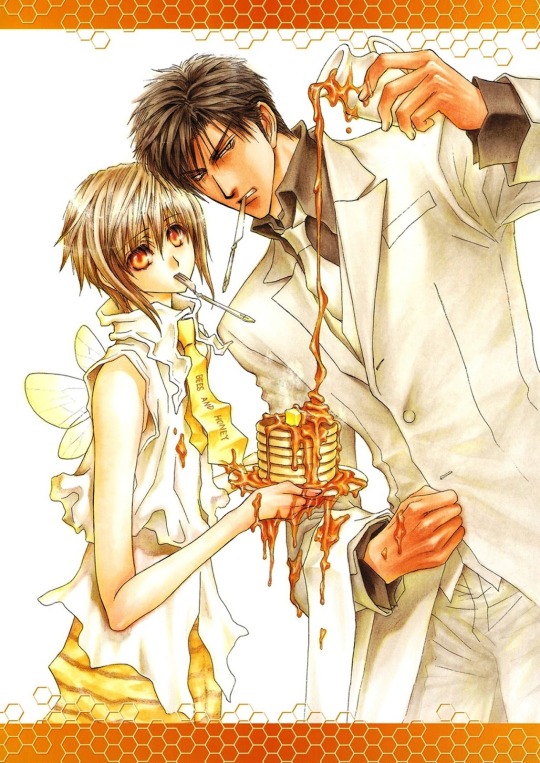
Ayase Yukiya & Kanou Somuku from No Money
Consider the case of Ayase, would you call him a “feminine” uke? Probably yes. He is small in stature - petite and cute. He is definitely very small in comparison to his seme Kanou. They probably have one of the most exaggerated size differences and an extreme case of the traditional pairing.
The traditional pairing comes from the customary practice of androphilia in pre-modern Japan. It involves relationship between a wakashu and a nenja or from the tradition of nanshoku. The former is not considered a man by the period’s standards and is considered a third gender by some scholars. The latter is considered as a mentor and lover for the former. While the traditional faded with ‘modernization’, tanbi literary movement (among others) kept alive remnants of it through the writings of the likes of Yukio Mishima.
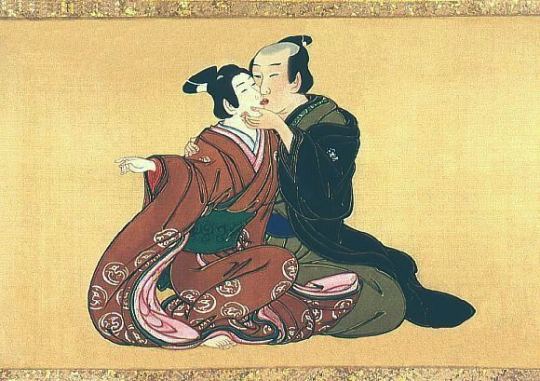
Note that the youth on the left is wearing a kimono whose style (furisode) and color was considered appropriate for adolescents of both sexes but not adult men, which along with the partially shaved pate denotes the boy's wakashū age status while the exposed bare feet indicates the purely sexual demeanor.
The traditional pairing has clearly inspired Japanese mangaka both BL artists and others. Look at the wakashu in customary androgynous clothing, younger, fairer and even smaller than the nenja, with relatively less experience being embraced by nenja who is in customary male clothing.
Check out more shunga about nanshoku to see visual ancestor of “yaoi”. The visual legacy continued with the likes of Go Mishima. The queers did it first.

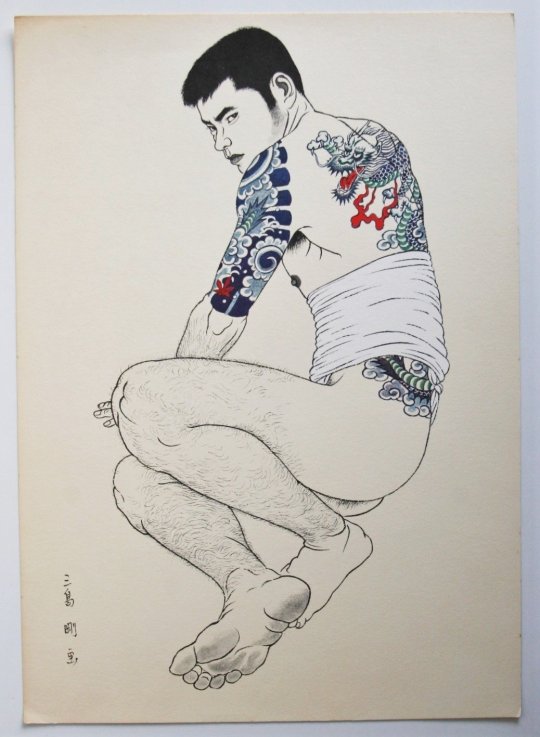
From the series "Mishima Go Book of Young Man" - Japan - 1972 (Showa 47)
Ayase in No Money fits into the wakashu ideal. Moreover, the creators of this manga explicitly differentiated between feminine uke with wakashu uke by juxtaposing Ayase with Someya who embodies traditional femininity.
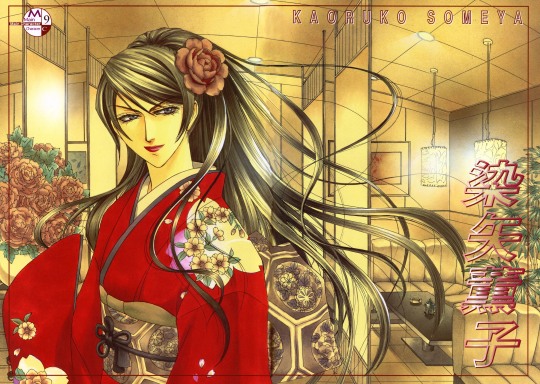

Someya and Honda from Henshin Dekinai
Putting it into perspective, it is noticeable that many a BL involves similar pairing. A lot of criticism BL faces is when it sticks to nanshoku dynamics. Interestingly, critics who can’t imagine genders beyond masculine and feminine, fail to tell apart “feminine” characteristics from wakashu characteristics. But there is no dearth of such dynamics getting subverted in numerous ways in BL:
ship with younger, lower class, petite, androgynous or any combination of customary wakashu characteristics in seme/riba.
ship with all parties being of similar age, class, physical attributes, experience, etc.
Emancipation
Shouldn’t typical uke archetype be seen as an example of subversion of the main character masculinity that dominates media landscape? Shouldn’t they be exalted for being what they are? Uke archetype that allows all genders to project onto and gain pleasure from, is that any less than a marvel in itself?
Pursuer & Pursued
In order to analyses if there is a shift in seme-uke dynamic, the P’AbsoluteBL employs the following to categories who is active:
who is pursuing whom
who makes the first call in terms of declarations and physical touch
who seems to be more in charge of the relationship
In BL, these are never reserved for seme/uke/riba. Who takes on which role depends on the narrative. BL rarely have fixed pursuer-pursued. All parties involved in a ship take on active role in different circumstances.
Take, for example, the original edition of Ossan’s Love, Hasegawa Yukiya employs certain indirect tactics to pursuing Soichi Haruta such as cooking, cleaning and caring for him. (These are tasks that seme/riba/uke usually engage in lighter BLs to gain and retain the attention/affection of the one they are pursuing.) Hasegawa also engages in activities they do together as a means to grow closer.
Once he learns of his love rival, he switches up the tactic. He pursues more directly and aggressively. Soichi rejects him. He withdraws and returns to the original tactic but without attempts to grow closer.
Soichi feels the loss and tries to get close to Hasegawa but is brushed off. He does not back down. Instead, he takes on a more aggressive route of pursuit - making amends and chasing after Hasegawa.
What P’AbsoluteBL implies with “I think BLIHID’s main couple has a REALLY weak seme/uke dynamic from the get go” is made abundantly clear in with “ShiLei does a lot of active pursuit, also he’s very self actualized.” Here, using pursuer/pursued would have sufficed. Instead, P’AbsoluteBL chose to disappropriate established terms ‘seme/uke’ and imbibed them with implications of “active pursuit” as well as “self-actualization” [regarding queer identity] that seme/uke/riba doesn’t carry originally. Most of it based on biases built on equating all BL to one type of BL: the one with traditional pairing that follows royal road progression.
What P’AbsoluteBL actively avoids discussing is that Beloved in House is basically following the super popular ‘domineering president’ plot based on a BG romance.
Live Action Struggles
P’AbsoluteBL mentions an imagined ‘struggles around seme/uke’ in live-action BL. I think the actual issue plaguing live action BL is the struggle to balance business and other interests while being able to do justice to the diversity within BL as a media genre.

source: (chil-chil.net)
In the chart:
ほのぼの – heartwarming – Example: Restart After Come Back Home
コメディ – comedy – Cherry Magic
ダーク – dark – Sing in Love
シリアス – serious – Cornered Mouse Dream of Cheese
キュン – exciting (kyun) – Mr. Unlucky Has No Choice but to Kiss
Japan has trouble in diversifying its live-action in terms of sub-genres and treatment/mood. Even Thailand, despite the amount it produces have trouble offering variety. Riba couple, maiden seme, yarachin characters, yandere X yandere ship, etc. are either very rare or non-existent in live action BL. Moreover, live action BL is seldom explicit and are mostly in the speculative territory with seme/uke/riba dynamics, making it all the harder to diversify.
Tbh, what fascinated me the most is the “I kind of automatically cringed” part of the question. I would love to know what brought about that reaction. I am sure that it would help shed some light on discourse surrounding BL in general.
Post #2: Blushing Maiden Trope & Seme/Uke
Discussion (intended and in italics) between an anon, @heretherebedork & P’AbsoluteBL on actions and reactions during physical relationships.
The discussion centers around “the character placed into the stereotypically feminine role” being repulsed/reluctant/hesitant when it comes to physical relationships. It is directly attributed to “purity culture in BLs”.
BL have a complicated relationship with “purity” or being “clean”. Tanbi roots of BL hinged on sexuality and obsession with beauty to the point of decadence. Shonen ai (original meaning) works also had characters who are usually promiscuous for one reason or the other, never forming very deep relationship (at least not enough to stick to monogamous unions for long) yet endlessly entangled with other characters, often baffling non-queer characters in those works.
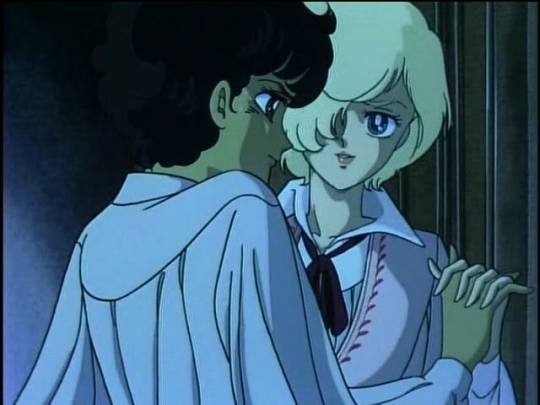
from Song of the Wind and Trees
*
[Inviting readers to hazard a guess: who is the seme and who is the uke. Answer at the end of this post.]
*
But how explicit the depiction of physical relationships has varied in BL with time and space. Japanese BL with the self-published BL (aniparo / yaoi – original meaning) boom saw very explicit depictions side by side with the commercial BL which have barely any explicit content or those which take a closed-door approach. Now Japanese BL have a wide range in terms of explicit content and have grown to incorporate elements from other genres including gei comi. Korean BL is similarly doing well. It is not uncommon to have chapters or parts of chapter in manhwa and novels dedicated to the celebration of physical relationships. Thai BL also have no dearth of explicit content, especially in web publishing.
Chinese BL in its early days had lots of explicit content, especially in self-publishing. But as censors started taking notice and cracking down, authors and platforms clamped down. Most BL were purged of any & all explicit content. Some of it migrated to Taiwanese platforms, AO3 & other foreign hosts. Now all danmei published is “pure love” devoid of even allusion to depiction of any physical relationship beyond above neck action.
When it comes to BL live action, things are a little different. In Japan and to an extend abroad, there has always been overlap between audience of BL and audience of Japanese GVs and pink eiga. Moreover, early live-action Japanese BL was probably aimed exclusively at hardcore BL fans. They were way more explicit on average and did not always involve physical relationship between the main ship.
Same seems true about early live-action Chinese BL. A Round Trip to Love Part 2 (2016) even had bondage and SM scenes which wasn’t there in the novel; but then it didn’t have the hard-earned happy ending the novel had either. But now, even dangai with “socialist brotherhood” (社会主义兄弟情) can’t be aired. Meanwhile, Japan’s average BL today lacks much explicit content. This isn’t to say that it doesn’t drop an occasional Sei no Gekiyaku (2020) once in a blue moon. Here are my speculations to why more of those doesn’t get made.
There is another reason for “purity culture” in BL.
Sathaporn Panichraksapong, an MD of GMMTV, a major producer of BL series, claimed that audience members who are mainly heterosexual women look for romantic relationships among the characters rather than sexual relationships.
We know that our audience are [sic] women. Women want to see only two boys having romantic moments together. They don't want to see sex. Sexual relationships in BL are for a gay audience. That's why in SOTUS the Series we have only two kissing scenes. With only these, audiences were already screaming. This is enough for them. (Interview with Sathaporn, GMMTV, 10 Aug. 2017)
Jirattikorn, Amporn. "Heterosexual Reading vs. Queering Thai Boys' Love Dramas among Chinese and Filipino Audiences." (2023).
As Jirattikorn goes on to highlight, this [wrong] perception about the audience (“women”) have changed ever since.
While early BL series tend to portray pure love without showing many sexual relationships, later BL series started to show more sex scenes between the two male lead characters.
Jirattikorn (2023)
“It’s always the character being pursued, who is typically in his first relationship, who Never Thinks Of Sex. They’re often very sweet and innocent and wide-eyed.”
While heretherebedork attributes it to “purity culture”, it can be argued that this has to do with what audience wanted:
I like the way they portray love in Thai BL. It is a kind of puppy love. BL of other nations, like Chinese BL, are darker. In Thai BL, two male characters often start off friends, then develop feelings for each other. It is very light, very sweet. (Krissy, f, 27, Philippines)
Jirattikorn (2023)
and what media houses thought they wanted, as evidenced by Jirattikorn’s interviews with BL fans. This is not to dismiss struggles with purity culture which is often a very slow part of decolonialization.
P’AbsoluteBL goes further to the argument that “purity” is associated with seme/uke dynamics in BL and maps it to typical het pairing (BG):
The stronger the seme/uke dynamic (the more heterosexually dysmorphic and less actually gay) the more likely this trope will manifest. Simply put: the man (because he is hooah a MANLY MAN DUDE) wants sex but the woman (delicate pure flower of cleanliness and joy) does not. And if she does want it she is a DIRTY, worthless, whore - so she MUST protest sex (GASP) at every single turn. (Seme is acting the male and uke the female in these kinds of narratives.) *please sense my sarcasm dumb interwebs, mm’kay?*
It’s true that the argument seems persuasive but is it right? Probably not. Seme, uke and riba characters can be divided into strong/weak categories based on their characterization - with the strong ones being those who pursue, take initiative, most likely to initiate intimacy at least for their first time, etc. and weak ones being those at the receiving end of pursuits and initiatives. Pairing a strong one with a weak one is probably more traditional –
strong riba x weak riba like in Addicted (at least before time skip)
strong seme x weak uke like in Old Fashioned Cupcake
weak seme x strong uke like in Saezurutori Wa Habatakanai (at least before time skip; pavam Doumeki)
compared to those with both parties being strong (which leads to delectable friction and sparks flying when done right) or both being weak (which leads to audience wondering: will either of them do something? No? Very well!).
BL’s sex negativity
Seme gets overwhelmed by his lust for uke, acts aggressively and has to be shut down or warned off.
Not only seme, uke and riba characters does this too. P’AbsoluteBL attributes “getting overwhelmed by lust” and “acting aggressively” to seme when it can be attributed to both uke (襲い受け) and riba as well. Other than acting aggressively, characters may employ seduction (eg. Xia Shang Zhou in You Are Mine (2023) - tried and failed & Charlie in Pit Babe (2023) - successful) and/or manipulation (Color Recipe by Harada).
Seme won’t take no for an answer because his needs are too great and his needs take precedence (he’s “the man” after all) and the uke is just TOO CUTE how could anyone resist? (After all the seme is only gay for this one guy because he is so cute. Everything, therefor, is the uke and his cutenesses’ fault.)
Moreover, P’AbsoluteBL is probably not aware of kawai seme who employ their cuteness to get uke to lower the guard and to seduce. Cuteness is clearly not a uke prerogative.

Like the sailor-costume wearing seme on the cover, cuteness is sometimes invoked through conventionally women’s clothing, cosplaying (maid, sailor, nurse), etc.
If the seme makes the choice to have sex for the uke, then the uke is not at fault and is still technically innocent. Only if an uke wants it, is he actually impure (or actually gay). In H4 when they both comfort and sex shame the bottom after the rape sequence, this is the narrative’s mentality. (A man who does not want sex is assumed to be able to fight another man off.)
Oh and ALSO, the seme must read the uke’s mind and know what the uke really wants.
I don’t even know what went into this argument. There is an entire subgenre: 調教 BL (training / conditioning) that is focused on pleasure training. If a character (seme/uke/riba) wants sex in a narrative, it usually only means that their partner is on the right track. Moreover, when a character wants, actively seeks and are denied intimacy for manipulation reasons, then their partner is made out to be cruel (either 鬼畜 or ゲス・クズ).
In other words, if the uke is interested in sex, he’s made impure by this interest.
Sex of any kind is an act of desperation and indicates lack of control and therefor diminishes both parties but particularly the uke, therefor the uke shouldn’t have to take responsibility of wanting sex, so the decision must be made by the seme for both of them. He is being a “good seme” by doing this. The uke, therefore MUST appear reluctant to have sex, or he is not a good/pure/virtuous person.
Honestly, I haven’t come across BL which gives off this kind of message. However, two-faced scummy characters (seme/uke/riba) get to employ hypocrisy, which includes slut-shaming, to humiliate characters they are shipped with but then such narratives are built to illicit hatred (for scummy characters) and angst and often punished with:
(a) unhappy ending for the couple
(b) breaking up of the ship
(c) groveling which may or may not end in redemption of the scum
(d) switching within ship – uke turns into riba/seme or seme turns into riba/uke – or shift in power dynamics (rich character becomes relatively poorer, junior from school becomes senior/superior in workplace).
A lot of readers find such dramatic plots satisfying and hence it is a successful subgenre.
*
Can you guess the seme in these 20 BL manga? Try this quiz on renta.
*
Post #3: How do they determine who will be archetype seme/uke?
Discussion regarding seme/uke determination in BL: @elynn0723 & P'AbsoluteBL (intended and in italics).
I think your confusion is partly nested in the fact that seme/uke is not about who fucks who, not really. Certainly not anymore. Seme/uke are narrative archetypes not physical acts.
Disappropritation. Discussed above.
I should say for the record that personality is NOT sexual preference.
P’AbsoluteBL goes onto give examples (all of which are fictionalized in different genres – GB, BL, etc.) but probably due to being limited by lack of exposure, goes onto ask, “How weird that anyone would think queers do this.” Queers do this. If one is willing to look beyond LGBTQIA+ form of queerness (which is born and brought up in America), one can see queer possibilities. For example, Kothi-Panthi queerness in India/South Asia. It is probably a good idea to pay attention to it when generalizing queerness given how big India/South Asia’s (queer) population is. There are very many similar forms of queerness in other parts of Global South. In many cultures, sexuality doesn’t inform identity but sexual preference does.
[ Aside: Kothi-Panthi model of queerness
This model doesn’t work for whole of India – region (India is so big and heavily populated - different sexual cultures and practices); linguistics (different terms in different region, same terms different meanings in different region, decline of Farsi (used in queer spaces in Delhi) and other queer argot/cant and their replacement with American English internet slang); class & caste (LGBTQIA+ being self-identification of mostly urban/rurban, upper class, English educated v/self- identification common among the sex workers, working class and other lower classes in rural as well as urban spaces who are excluded from consumerist queerness);
NGOfication of queer movement & action; global queering and neoliberal take over leading to americanization –– intermixing & “gay” (and other terms) being used differently by different classes.]
How do they determine who will be archetype seme/uke?
P’AbsoluteBL points to narrative roles - who is “after” the relationship more, and then goes onto claim “the heroine is the main character, the love interest is her love interest. It’s decided for them because it’s a romance novel.” I don’t know if this helps explaining either seme/uke/riba archetypes in BL or pursued/pursuer. Aren’t there romances where hero pursues heroine and the other way around? Aren’t there romances where both party pursue each other?
Even if we assume that androphilic female audience is projecting the sexual mores & expectations imposed on them onto male characters, then by the very act aren’t they subverting those expectations.
How do they determine who tops?
P’AbsoluteBL provides the following schema:
seme = active pursuer
since active pursuer is “the male role”
he should do the penetrating
which has to be done
P’AbsoluteBL also gives a term for this association: heterosexual dysmorphia - "the idea that any couple must fit into predetermined binary gender roles". This is probably coming from a place of ignorance since the example given is confined to musings about sexism concerning the upper class in Global North.
Also, at least in the ambit of Kothi-Panthi sexuality, fitting into masculine top-feminine bottom dynamic doesn’t place them into any predetermined binary gender roles. Instead, it only places them in the fluid space of multi-genders: can/are seamlessly float(ing) between being kinnar/hijra/ali and being “cis-men”.
If one is to ask the question: “Which one of you is The Girl?” to a kothi-panthi couple, the kothi would tell you without hesitation: “I am The Girl.” Might even asked you in turn, “Couldn’t you tell?”
Kothi [is the word used by] effeminate men who desire to be penetrated by "real" men whom they call ‘panthi’.
Queer Movements by Paromita Chakravarti & Aniruddha Dutta
Seme/uke/riba archetypes are imbibed with different traits and different spin on personalities that a seasoned BL sommelier might be able to spot easily but would confuse those who are less familiar with all that the genre has to offer.
The following excerpt from an analysis by @ranchthoughts reflects the most popular idea about seme/uke dynamics.
Most BL shows can be read through a lens of seme/uke dynamics, which originated in yaoi. The seme is the “pursuer” character and the uke is the “pursued”. There are certain physical (height, skin colour, etc.), social (age, wealth, social capital, etc.), and personality (active vs. passive, extroverted vs. introverted, flirtier vs. shyer) markers which are typically associated with either the seme or the uke. For example, semes tend to be taller, wealthier, older, flirtier, tanner, more active, and have a higher social status, while ukes tend to be shorter, poorer, younger, shyer, paler, and have a lower social status. “Seme” and “uke” roles are also sometimes conflated with masculinity and femininity (semes are “masculine” and ukes are “feminine”) and sexual preferences (semes are dominant and tops and ukes are submissive and bottoms). There are also tropes associated with either the seme or the uke, like ukes typically give cheek kisses and semes forehead kisses.
Thus, things like height, age, wealth, personality, presumed sexual preference, and the role they take in tropes can index the character’s status as a seme or a uke, and in turn the character’s identity as a seme or uke in the narrative (pursuer vs. pursued) indexes a character’s personality, sexual preferences, etc., however unrealistic and simplistic that is in real life. In a BL, we would expect the seme (pursuer) and uke (pursued) characters to exhibit most, if not all, of the associated seme or uke traits and roles in tropes, though this is not always true (and some BLs have little to no seme/uke dynamics at all).
There are two interesting things about such an understanding of seme/uke dynamics:
It closely resembles nenja/wakashu dynamics (and its cousins) in the customary and mostly age-stratified androphilia in pre-modern Japan.
Live action BL, at least the ones that were current and popular, stuck mainly to a single type of dynamic: pairing of one seme of a particular kind (スパダリ – super darling) with one uke of a particular kind (ヘタレ – milquetoast). There are barely any riba couple. It is painting picture of BL in monochromes. So much so that Bad Buddy and My School President were seen as some path breaking feat and a break away from “yaoi” tropes by live action audience, rather than seeing them having just another (or less familiar) set of yaoi / BL tropes.
What P’AbsoluteBL identifies as “heterosexual dysmorphia” in “yaoi” is basically what BL inherited from Japan’s pre-modern androphilia including “femininity” in uke from chiago, wakashu and androgynous Kabuki actors and (hyper)masculinity in seme from nenja and others who enacted “the male role”. BL did not passively receive any of these. And for moe, artists and audience alike, subverted it all.
This is true for all tropes that are attributed to seme/uke.
Height difference – Earliest BLs had petite bishonen pairings. Yaoi introduced height differences – all of them:
tall seme x short uke
short seme x tall uke (this is probably the most sexualized height difference)
tall seme x tall uke (with little to no difference)
both/all short riba CP/ship
both/all tall riba CP/ship
tall riba x short riba
short riba x tall riba
Cuteness – Used to establish how irresistible a character (seme/uke/riba) is irrespective of their attitudes and behavior are. Oft part of seme’s seduction tactic, especially when uke has a weakness for cute things. Even when cuteness is not one of the seme’s attributes, it is invoked either actively by serving kawai in speech or through actions including cosplay; or passively like in the following example where a typical super darling seme, Asami Ryuichi from Finder unintentionally triggers moe in Takaba Akihito (his uke) by cuddling a baby.
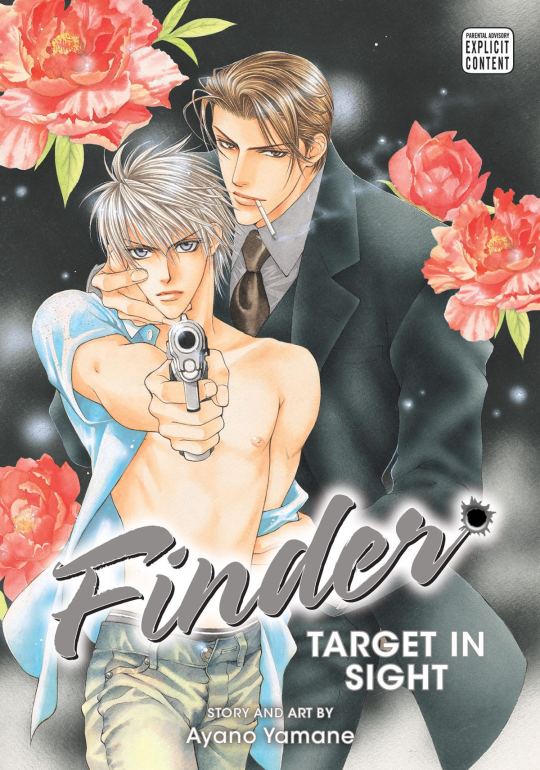

Uke’s cuteness is exploited to establish a sou uke (an uke every other character turns seme for) or subvert the same like in No Money where one of the epitomes of bishonen cuteness, Ayase (uke), who manages to enthrall others however isn’t a sou uke as one might expect and thus subverts the wakashu trope.
Moreover, Kanou (seme) wasn’t initially drawn to Ayase due to his cuteness but due to Ayase’s kindness that lifted him out of the abyss of despair, when Kanou was at his weakest.
3. Bulk – BL have main characters (seme/uke/riba) with varying bulk and body types. There is far less diversity when it comes to Live Action BL.
4. Blushing maiden/virginal innocent trope – applies to all sorts of BL characters.
Edit: Conclusion
1. Surprisingly, ethnocentrism and loud echo of colonial masculinity in particular seem to permeate the discourse surrounding BL.
2. I really wish live action BL would have as much diversity as other BL media. Why is it so slow to diversify? Is it because of business interests? Is sticking to super darling X milquetoast pairing with royal road progression a sensible business decision? Or is sexism promoting wrong impressions of what audience want?
3. How come the Japanese terms "seme" & "uke" are used a lot but not "riba"? Where did live action BL audience learn these terms?
***
Yaoi = [how P'AbsoluteBL uses it] synonym for ボーイズ ラブ (boys love) manga.
= [popular use in anglophone BL manga fandom] BL manga with explicit content; as opposed to shonen ai.
= [original meaning] derivative works, which were mostly plot-what-plot type, that are self-published (doujinshi)
Answer to a question posted above: Gilbert Cocteau – uke in Song of the Wind and Trees

Below is the seme: Serge Battour

from Song of the Wind and Trees

Earliest BL manga had very pretty seme/uke/riba characters (if we are to call them so) and were not too preoccupied with "manliness" or a single type of "masculinity". But, they were surely obsessed with bishonen.
-
[1] 互攻 is also used to indicate POV switching between gong and shou in fiction.
[2] 纯爱 is also used to indicates asexual androphilia.
CP/pairing - involves 2 characters. Ship - involves 2 or more characters.
Inviting @waitmyturtles and @lurkingshan to share your thoughts if any (since I have noticed you guys use the terms "seme" & "uke" as well). Hope you guys don't mind the mention.
#japanese bl#boys love#bl history#thai bl#chinese bl#danmei#bl trivia#bl tropes#seme/uke#seme#uke#riba#korean bl#taiwanese bl
85 notes
·
View notes
Photo

Creative Direction & PR <Client> @butcherjo_official @kobe_heights <Content> 気鋭の肉職人 @butcherjo_official が手掛ける実店舗 @kobe_heights にて、納涼パーティーが開催されます。 詳細はクライアントアカウントより、ご覧くださいませ。 神戸市兵庫区梅元町16-40 #meatpointhere 夏祭り感覚なカジュアルさと上質な料理が掛け合わさる、気持ちの良いイベントとなることでしょう。 #popup #summerparty #bbq ##meat #steak #Kobe #fashion #food #foodevent #beef #beefgang #butcher #schinatown #creative #community #glocal #outdoor #sparkle #hanabi #2022 #夏祭り #手持ち花火 #納涼会 #梅元町 #神戸 https://www.instagram.com/p/Cg_3bC7PC00/?igshid=NGJjMDIxMWI=
#meatpointhere#popup#summerparty#bbq#meat#steak#kobe#fashion#food#foodevent#beef#beefgang#butcher#schinatown#creative#community#glocal#outdoor#sparkle#hanabi#2022#夏祭り#手持ち花火#納涼会#梅元町#神戸
0 notes